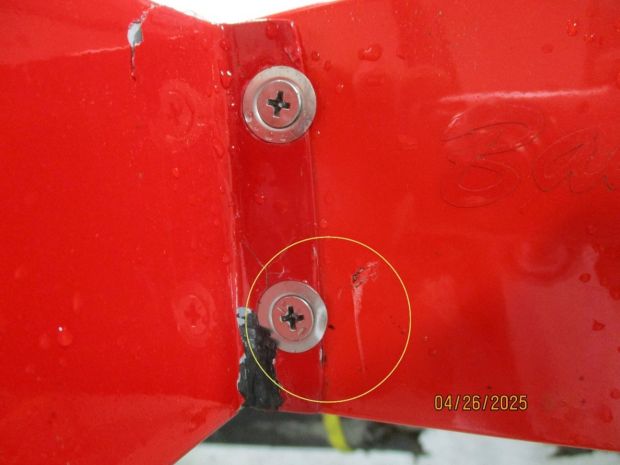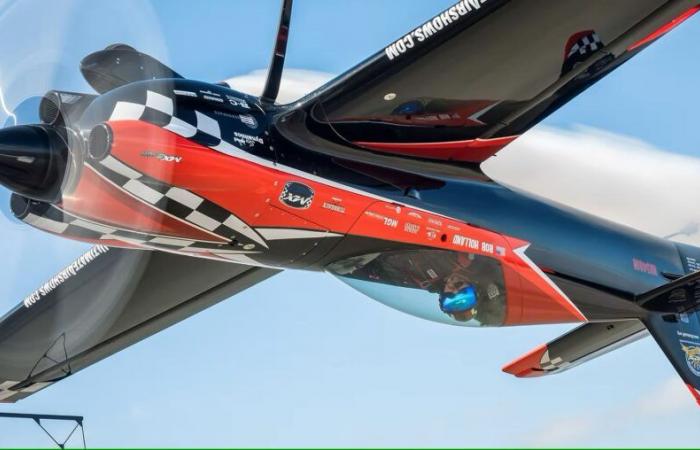The National Transport Security Board (NTSB) from the United States focuses its research on the fatal accident of the acrobatic pilot Rob Holland in a specific piece belonging to a modification carried out in the controls of its aircraft MXS-RH. Holland, a renowned air acrobatics champion, lost his life on April 24 while trying to land at the base of the Langley Air Force, Virginia.
And Preliminary report of the NTSB, published with unusual speed on May 2 (eight days after the event, instead of the usual 30), details that One of the two small threaded aluminum plugs from the plane’s lifting control was not installed at the time of impact. The piece was located about 3 meters (10 feet) behind the main remains of the aircraft.
This component was part of a modification that Holland developed in collaboration with the manufacturer of the aircraft, MX Aircraft. The system allowed the plugs, one on each side of the elevator (the control surface in the tail that handles the headquarters of the plane), revealing an access hole. Through this, counterweights could be inserted to adjust the sensation of the elevator according to the acrobatic routine to be performed.
The NTSB found that the missing cap, corresponding to the left side of the elevator, presented abolish and scratches. These damages suggest contact with the rest of the horizontal stabilizer of the plane before the final impact. The preliminary report, however, does not yet determine the effect that the absence of this piece could have on Holland’s ability to control the aircraft or establish a probable cause of the accident, which is expected in the final report projected by 2026 or early 2027.


Holland, 50, arrived from Tennessee to participate in the Air Festival “Air Power Over Hampton Roads”. According to the NTSB and testimonies collected, “The aircraft made a normal approach to the track” and leveled about 15 meters (50 feet) on it. Then, the plane “headed (‘Porpoised’) twice”, then “raised the nose sharply (‘PiFched Straight Up’), praised 90 degrees to the left and descended until impacting with the terrain.”
The NTSB researcher Dan BoggsHe previously confirmed that Holland “was arriving to land on track 8” and performed a normal landing, without acrobatic maneuvers. The car caleplaza hit the ground to the left of the track and did not catch fire. Holland was the only occupant.
The news of the death of Holland shocked the world of aviation. Held the record of 13 consecutive titles as National Acrobatics Champion of the United States And he was admired for his innovative maneuvers, many of them of his own creation. Its MXS-RH plane, built according to its specifications, was a carbon fiber machine capable of supporting 16 gs and making alabeos at 500 degrees per second.
The International aeronautical federation (ISP)which supervises world aerial competitions, described Holland as “a great of all time in air acrobatics.” Its president, Greg Principato, added that Holland “was committed to improving his sport, and all aerial sports, for future generations.” The Experimental Aircraft Association (EAA)organizer of the famous Oshkosh Air Festival where Holland was a usual figure, he remembered him as “a pioneer whose passion and innovation redefined the art of the acrobatic flight.”
Despite the event, and after consultations with the NTSB and the professionals involved, the “Air Power Over Hampton Roads” Air Festival was held as scheduled for that weekend, according to Colonel Matthew Altman, commander of the Langley-Eustis joint base.









